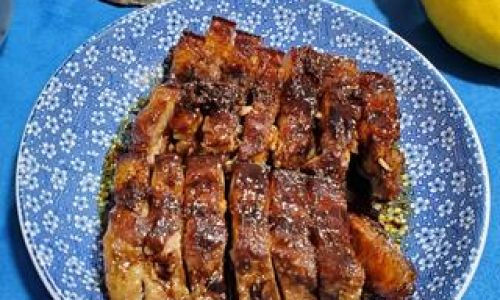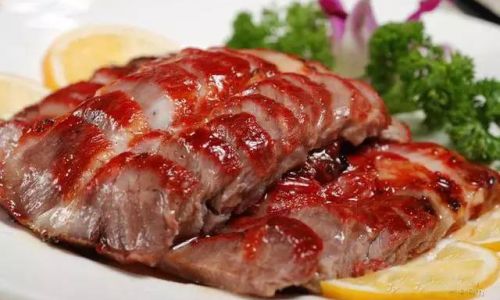Fried squid rolls, a beloved dish in many Asian cuisines, are celebrated for their crispy texture, tender interior, and irresistible flavor. Often served as an appetizer or a main course, this dish combines the natural brininess of squid with a light, airy batter that fries to golden perfection. Whether you’re a seasoned home cook or a curious novice, mastering the technique of frying squid rolls will elevate your culinary repertoire. This comprehensive guide will walk you through selecting the finest ingredients, preparing the squid, crafting the perfect batter, and executing the frying process with precision. Let’s dive into the world of fried squid rolls and unlock the secrets to achieving restaurant-quality results at home.
Understanding the Dish: A Brief Overview
Fried squid rolls, known in some cultures as “calamari rings” or “stir-fried squid rolls,” are a staple in Chinese, Japanese, and Southeast Asian kitchens. The dish typically features tender squid tubes sliced into rings or rolls, coated in a delicate batter, and deep-fried until crispy. The result is a harmonious blend of textures—crunchy on the outside and soft on the inside—paired with a savory seasoning that often includes garlic, ginger, or chili. While the recipe may vary slightly by region, the core principles of preparation remain consistent: fresh squid, a well-balanced batter, and precise frying techniques.

Selecting the Freshest Squid
The foundation of exceptional fried squid rolls lies in the quality of the squid itself. When shopping for squid, look for specimens with a firm texture, glossy skin, and a mild oceanic scent. Fresh squid should feel slightly heavy for its size, with no discoloration or sliminess. If possible, opt for whole squid rather than pre-cleaned tubes, as whole squid retains more moisture and flavor.
Cleaning and Preparing the Squid
- Rinsing: Thoroughly rinse the squid under cold running water to remove any sand or debris.
- Removing the Head and Tentacles: Gently pull the head away from the body. The tentacles and innards will come out with it. Discard the innards but reserve the tentacles if desired (they can be fried separately).
- Peeling the Skin: Slide your finger under the mottled purple skin and peel it away from the body. This step is crucial, as the skin can become tough when cooked.
- Removing the Quill: Inside the squid tube, you’ll find a transparent, plastic-like quill. Pull it out and discard it.
- Slicing: Pat the squid dry with paper towels. Using a sharp knife, slice the tube crosswise into ½-inch rings. For a decorative touch, you can also make shallow vertical cuts along the rings to create a “flower” pattern.
Crafting the Perfect Batter
The batter is the unsung hero of fried squid rolls. It should be light enough to highlight the squid’s texture but substantial enough to create a satisfying crunch. A classic batter combines flour, cornstarch, and a leavening agent like baking powder, which creates air pockets during frying. For added flavor, consider incorporating seasonings such as salt, pepper, garlic powder, or a pinch of five-spice powder.
Ingredients for the Batter
- 1 cup all-purpose flour
- ½ cup cornstarch
- 1 tsp baking powder
- 1 tsp salt
- ½ tsp white pepper
- 1 cup ice-cold water (or sparkling water for extra crispiness)
- 1 large egg (optional, for richness)
Preparation
- In a large mixing bowl, whisk together the flour, cornstarch, baking powder, salt, and white pepper.
- Gradually whisk in the ice-cold water (or sparkling water) until the batter reaches a pancake-like consistency—thick enough to coat the squid but thin enough to drip slowly from a spoon.
- If using an egg, lightly beat it into the batter.
- Let the batter rest for 15–20 minutes. This allows the leavening agents to activate, ensuring a lighter texture.
Marinating the Squid (Optional but Recommended)
While not always traditional, marinating the squid can enhance its flavor and tenderize the meat. A simple marinade of rice wine, soy sauce, ginger, and garlic works wonders.
Marinade Ingredients
- 2 tbsp rice wine (or dry sherry)
- 1 tbsp soy sauce
- 1 tsp grated ginger
- 1 garlic clove, minced
- 1 tsp sesame oil
Preparation
- In a bowl, combine the rice wine, soy sauce, ginger, garlic, and sesame oil.
- Add the sliced squid rings and toss gently to coat.
- Marinate for 15–30 minutes in the refrigerator. Do not over-marinate, as the acidity from the wine can toughen the squid.
The Frying Process: Techniques for Crispy Perfection
Frying squid rolls requires careful attention to oil temperature and timing. Overcrowding the pan or frying at too low a temperature will result in soggy, greasy rolls. Conversely, overcooking the squid will make it rubbery.
Equipment and Oil
- Use a heavy-bottomed pot or deep fryer to maintain consistent oil temperature.
- Opt for a neutral oil with a high smoke point, such as vegetable, canola, or peanut oil.
- Fill the pot with enough oil to submerge the squid rolls completely (about 3–4 inches).
Step-by-Step Frying Guide
- Heat the Oil: Preheat the oil to 375°F (190°C). Use a thermometer to monitor the temperature accurately.
- Coat the Squid: Working in batches, dip the squid rings into the batter, ensuring each piece is evenly coated. Let excess batter drip off before frying.
- Fry in Batches: Gently lower the squid into the hot oil, being cautious of splatters. Fry for 2–3 minutes until golden brown. Avoid overcrowding the pan, as this lowers the oil temperature and leads to uneven cooking.
- Drain Excess Oil: Use a slotted spoon or spider strainer to transfer the fried squid rolls to a wire rack or paper towel-lined plate. This prevents them from becoming soggy.
- Season Immediately: While the squid is still hot, sprinkle with a pinch of salt, pepper, or your choice of seasoning (e.g., chili flakes, lemon zest).
Serving Suggestions and Garnishes
Fried squid rolls are incredibly versatile and pair well with a variety of accompaniments.
Dipping Sauces

- Sweet Chili Sauce: A classic choice that balances heat and sweetness.
- Garlic Aioli: Creamy and rich, with a punch of garlic.
- Lemon Wedges: A squeeze of fresh lemon juice brightens the dish.
- Soy-Ginger Dip: Combine soy sauce, rice vinegar, grated ginger, and a touch of honey.
Garnishes
- Chopped cilantro or scallions for freshness.
- Toasted sesame seeds for added crunch.
- Thinly sliced red chili for a pop of color and heat.
Pairing Ideas
Serve fried squid rolls as part of a banquet-style meal with steamed rice, stir-fried vegetables, or noodles. They also shine as a standalone appetizer with cocktails or beer.
Tips for Success and Common Pitfalls
Achieving Crispy Texture
- Cold Batter: Using ice-cold water or sparkling water in the batter creates air bubbles, resulting in a lighter, crispier coating.
- Double Frying: For extra crunch, fry the squid once at 325°F (163°C) for 2 minutes, remove, and then fry again at 375°F (190°C) for 1 minute.
Avoiding Sogginess
- Drain Properly: Always drain fried squid on a wire rack, not paper towels, to prevent steam buildup.
- Serve Immediately: Fried squid is best enjoyed fresh. Avoid letting it sit for too long, as the coating will soften.
Preventing Tough Squid
- Cook Time: Squid cooks incredibly quickly. Overcooking by even 30 seconds can result in rubberiness.
- Tenderizing: If using larger squid, consider tenderizing it with a meat mallet or scoring the flesh before slicing.
Healthier Alternatives and Variations
For those seeking a lighter option, consider these adaptations:
Baked Squid Rolls
- Preheat the oven to 425°F (220°C).
- Coat the squid in batter and place on a wire rack set over a baking sheet.
- Bake for 10–12 minutes, flipping halfway, until golden and crispy.
Air-Fried Squid Rolls
- Preheat the air fryer to 375°F (190°C).
- Lightly spray the battered squid with cooking oil.
- Air-fry for 6–8 minutes, shaking the basket halfway, until crispy.
Gluten-Free Option
- Substitute all-purpose flour with a gluten-free blend (e.g., rice flour, tapioca starch).
- Ensure other ingredients (e.g., soy sauce) are also gluten-free.
Cultural Significance and Regional Twists
Fried squid rolls hold a special place in Asian culinary traditions. In China, they often appear during festivals and family gatherings, symbolizing abundance and prosperity. In Japan, ika-ringo (squid rings) are a popular izakaya (pub) snack, served with a tangy ponzu dipping sauce. Southeast Asian variations might incorporate lemongrass, turmeric, or coconut milk into the batter for a tropical twist.
Conclusion: A Culinary Delight Worth Mastering
Fried squid rolls are a testament to the magic of simple ingredients transformed by skill and precision. By selecting fresh squid, crafting a flawless batter, and mastering the frying process, you can recreate this beloved dish in your own kitchen. Whether enjoyed as a crispy appetizer or a star attraction at the dinner table, fried squid rolls are sure to impress. Experiment with seasonings, sauces, and cooking methods to make the recipe your own. With practice, you’ll soon find yourself frying squid rolls with the confidence of a seasoned chef—one golden, crispy bite at a time.
Final Tip: Don’t be afraid to make this dish your own! Add a sprinkle of smoked paprika, a drizzle of honey, or a garnish of pickled vegetables to elevate the flavors. The beauty of fried squid rolls lies in their adaptability, so let your creativity sail.




0 comments